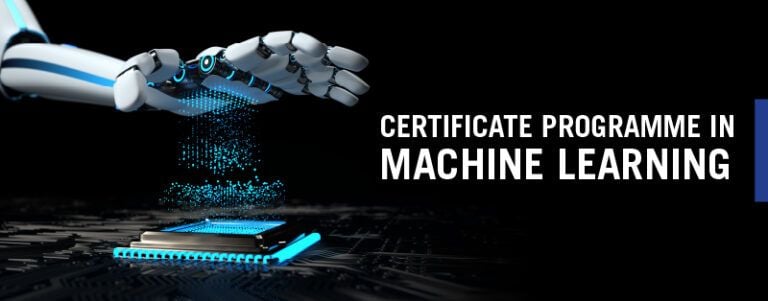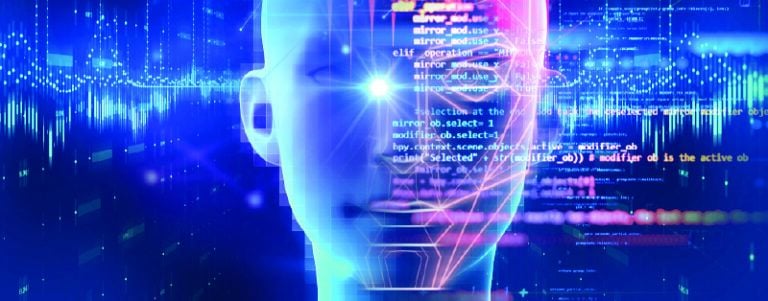Mastering Machine Learning Classifications and its Applications – A Rundown

Remember a time when diagnosing diseases, predicting market trends, or even just getting your favorite movie recommendations required manual effort, guesswork, or a stroke of luck? Enter the era of data science and machine learning, where algorithms do the heavy lifting. From personalized shopping experiences to self-driving cars, classification in machine learning has revolutionized our approach to problem-solving. Today, machine learning for predictive analytics helps us foresee everything from stock market shifts to potential health risks, proving that with the right data, the future is now just a prediction away. But what exactly is machine learning? Let’s explore that question in detail.
What are Classification Algorithms in Machine Learning?

A machine learning classification algorithm is a supervised learning technique used to identify the category of new observations based on training data. Essentially, it’s like teaching a computer to sort new information into neat little boxes. The program learns from a given dataset and then classifies new observations into various classes or groups, such as Yes or No, 0 or 1, Spam or Not Spam, and so it goes. These classes are also known as targets, labels, or categories. Now, let’s explore some of the algorithms that make this magic happen.
ALSO READ: 7 Remarkable Types of AI and How They are Making a Difference in the World
Different Classification Algorithms
1. Logistic Regression
Logistic regression is one of the most popular machine learning classification algorithms and falls under the supervised learning technique. It’s used for predicting the categorical dependent variable using a set of independent variables. Imagine it as determining whether an outcome is a “Yes” or “No”, but with a twist: it provides probabilistic values between 0 and 1 rather than a simple binary result. This algorithm fits an “S”-shaped logistic function, rather than a straight line, to predict the likelihood of outcomes.
Therefore, it is adept at handling binary classifications such as true or false, 0 or 1, or spam versus not spam. Logistic regression is particularly useful when the outcome is categorical or discrete, making it a go-to method for tasks like email filtering or credit scoring.
2. Decision Trees
Decision trees are tree-structured classifiers where internal nodes represent features of the dataset, branches represent decision rules, and leaf nodes represent outcomes. It is like a detailed flowchart that guides you through a series of decisions based on the dataset’s features. In a decision tree, there are two types of nodes: decision nodes and leaf nodes. Decision nodes make decisions and have multiple branches, while leaf nodes represent the final outcomes and do not branch further.
Decisions or tests are performed based on the dataset’s features, creating a graphical representation that outlines all possible solutions to a problem under given conditions. Decision trees is one of the best classification techniques in ML that simplify complex decision-making processes, providing a clear and intuitive path from data to decisions.
3. Random Forests
Random forests is a popular machine learning classification algorithm that belongs to the supervised learning technique. This method can be used for both classification in machine learning and regression problems. It is based on the concept of ensemble learning, which combines multiple classifiers to solve complex problems and improve model performance. Imagine a random forest as a group of decision trees working together to enhance predictive accuracy. Instead of relying on a single decision tree, a random forest takes the prediction from each tree and makes a final decision based on the majority vote.
This method improves the accuracy of the model and prevents overfitting. The more trees in the forest, the higher the accuracy, similar to consulting multiple experts to arrive at a well-rounded conclusion.
4. Support Vector Machines (SVM)
Support Vector Machines (SVM) are powerful machine learning algorithms used for linear or nonlinear classification in machine learning, regression, and outlier detection tasks. SVMs are versatile and efficient, capable of handling high-dimensional data and complex relationships. They work by finding the optimal hyperplane in an N-dimensional space that best separates data points into different classes. SVMs are particularly effective in tasks like text classification, image recognition, spam detection, handwriting identification, gene expression analysis, face detection, and anomaly detection. Think of SVMs as precision tools that carve out clear boundaries in a dataset, making them ideal for managing detailed and intricate classification tasks.
5. Neural Networks
Neural networks are inspired by the human brain and utilize interconnected nodes or neurons to process data in a layered structure. This method, known as deep learning, creates an adaptive system where computers learn from their mistakes and continuously improve. Neural networks are particularly adept at handling unstructured data and making general observations without explicit training. Neural networks excel in tasks such as summarizing documents, recognizing faces, and even generating creative content, tackling complex problems with impressive accuracy.
ALSO READ: The Ultimate AI Quiz: Evaluating Your Place in the AI-Driven Workforce
Practical Applications of Classification
The classification in machine learning algorithms has become indispensable across various industries, driving innovation and efficiency. Here are some key applications where these algorithms make a significant impact:
Image Recognition
Classification is vital in computer vision tasks, classifying images into predefined categories. This enables applications such as object detection, facial recognition, and autonomous driving, where understanding visual data is crucial.
Face Recognition
These classification algorithms are used to identify and authenticate individuals based on their facial features. This technology finds applications in security systems, access control, and surveillance, enhancing safety and convenience.
Disease Diagnosis
In healthcare, classification algorithms analyze patient data, symptoms, and medical test results to classify diseases or predict the likelihood of certain conditions. This assists doctors in making accurate diagnoses and treatment plans.
Voice and Language Identification
Classification in machine learning models can identify different voices and languages in data, aiding multilingual analysis, language identification tasks, and machine translation, facilitating global communication.
ALSO READ: What is Artificial Intelligence Optimization? All You Need to Know
Handwriting Recognition
These classification algorithms can decipher handwritten characters or text, essential for Optical Character Recognition (OCR) systems and digitizing handwritten documents for easier storage and access.
Credit Risk Assessment
Financial institutions use classification models to analyze historical data and borrower characteristics to assess the creditworthiness of loan applicants, aiding in making informed loan approval decisions.
Fraud Detection
Classification models analyze patterns and anomalies in transaction data to identify fraudulent activities, playing a critical role in protecting financial institutions, e-commerce platforms, and security systems from fraud.
Stock Market Prediction
Classification in machine learning algorithms predict stock market trends, helping investors decide whether to buy, sell, or hold stocks based on historical data and market indicators
Recommendation Systems
Classification models predict user preferences and classify items or content to provide personalized recommendations. This improves user experience in e-commerce, streaming platforms, and content curation by delivering tailored content
Case Studies: Successful Implementation of Classification Models
 A. For Logistic Regression
A. For Logistic Regression
Diagnostic Model Development for COVID-19
The primary symptoms of COVID-19 closely resemble those of other respiratory illnesses, leading to significant challenges in accurate diagnosis. Given the unpredictability associated with the prognosis of COVID-19, there is a pressing need for machine learning for predictive analytics. This study aimed to create a diagnostic model using logistic regression to improve the accuracy of COVID-19 diagnosis.
Materials and Methods
The study utilized data from 400 patients at Ayatollah Talleghani Hospital, Abadan, Iran, who were being evaluated for COVID-19. The feature selection process employed the Chi-square correlation coefficient, and logistic regression analysis was conducted using SPSS V25 software. The analysis included diagnostic determinants from patient histories, physical exams, laboratory tests, and imaging results. The model’s performance was assessed using metrics such as sensitivity, specificity, accuracy, and the Area Under the Curve (AUC).
Results
Through Chi-square analysis, 15 significant diagnostic features (P < 0.05) were identified. The logistic regression model demonstrated impressive performance, achieving a specificity of 97.3%, sensitivity of 98.8%, and overall accuracy of 98.2%.
Conclusion
The COVID-19 pandemic has strained healthcare resources globally, underscoring the need for effective Clinical Decision Support Systems. This study highlights the potential of logistic regression as a powerful tool in such systems, aiding in the swift and accurate diagnosis of COVID-19.
ALSO READ: How to be Friends With AI. Yes, It’s Possible!
B. For Neural Networks
Urban Growth Modeling Using Artificial Neural Networks
This study explored the use of Artificial Neural Networks (ANN) to reduce subjectivity and calibration time in urban growth modeling. The ANN-based model was applied to simulate the urban expansion of the Indian city of Saharanpur. By integrating remote sensing and Geographic Information Systems (GIS), site attributes were generated, which were then used by the ANN to identify patterns and predict urban growth potential.
Materials and Methods
Various feedforward ANN architectures were tested to find the most effective model for simulating urban growth. The optimal architecture was selected based on its performance in generating accurate growth simulations. The model’s accuracy was evaluated using the Kappa index and three spatial metrics: Mean Patch Fractal Dimension, Landscape Shape Index, and Percentage of Like Adjacencies.
Results
The study confirmed that the ANN-based model could objectively simulate urban growth patterns. The integration of GIS, remote sensing, and ANN proved successful in predicting urban expansion, providing a reliable tool for future urban planning.
Conclusion
The application of ANN in urban growth modeling offers a significant advancement in reducing subjective biases and improving predictive accuracy. Moreover, this approach facilitates better urban planning and management, demonstrating the practical utility of combining the best classification techniques in ML with spatial analysis tools.
ALSO READ: Trend Alert: Physical AI is the Next Big Thing in AI
Future of Classification in Machine Learning
As we’ve explored, the evolution of machine learning and its classification algorithms has revolutionized problem-solving across industries. From recognizing faces and diagnosing diseases to detecting fraud and predicting market trends, these technologies have made a profound impact. Understanding these applications highlights the importance of classification in machine learning in our data-driven world.
The future of classification in machine learning promises more accurate, efficient, and scalable solutions across various domains. In fact, advanced algorithms and increased computational power will enable precise predictions and analyses, improving outcomes in healthcare, finance, urban planning, and more. These innovations will lead to more personalized and effective services, optimizing resources and driving significant advancements in technology and society.
For those looking to delve deeper into this field, there are numerous classification algorithm training courses available that provide comprehensive knowledge and practical skills. Understanding and applying classification in machine learning techniques can unlock numerous opportunities across these varied applications. Explore Emeritus’ online artificial intelligence courses and machine learning courses to take the next step in a career in machine learning classification.
Write to us at content@emeritus.org






